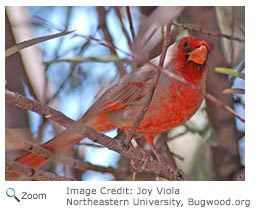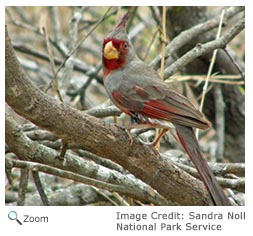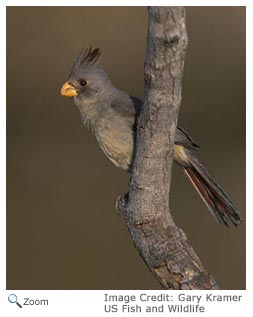Pyrrhuloxia - Cardinalis sinuatus |
|||||||||||
Description The male is gray with a rosy red breast, red wings and tail, a red crest, and a red face. The female looks similar, but she is a little paler and lacks the red breast and face. The pyrrhuloxia has a thick, yellow parrot-like bill that is uses to crack open seeds.
Range
Habitat
|
Diet Life Cycle
The nest is placed in a dense, thorny bush. The female incubates the eggs for about two weeks. During courtship and incubation, the male brings the female food. The chicks fledge in about 10 days, and both the male and female care for the young. BehaviorPyrrhuloxia are nonmigratory, but they sometimes stray from their territories. In the winter, they may forage for food in huge flocks containing hundreds of birds. |
||||||||||
Audio Credit: xeno-canto.org Andrew Spencer |
|||||||||||

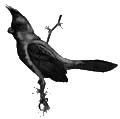
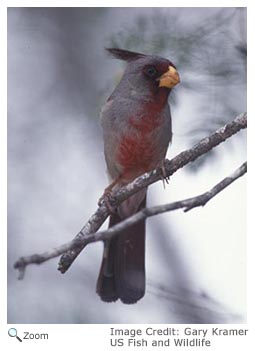
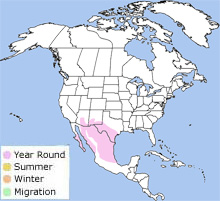 The pyrrhuloxia is found in southern Arizona and New Mexico and in southwestern Texas south to Mexico. It does not migrate.
The pyrrhuloxia is found in southern Arizona and New Mexico and in southwestern Texas south to Mexico. It does not migrate.